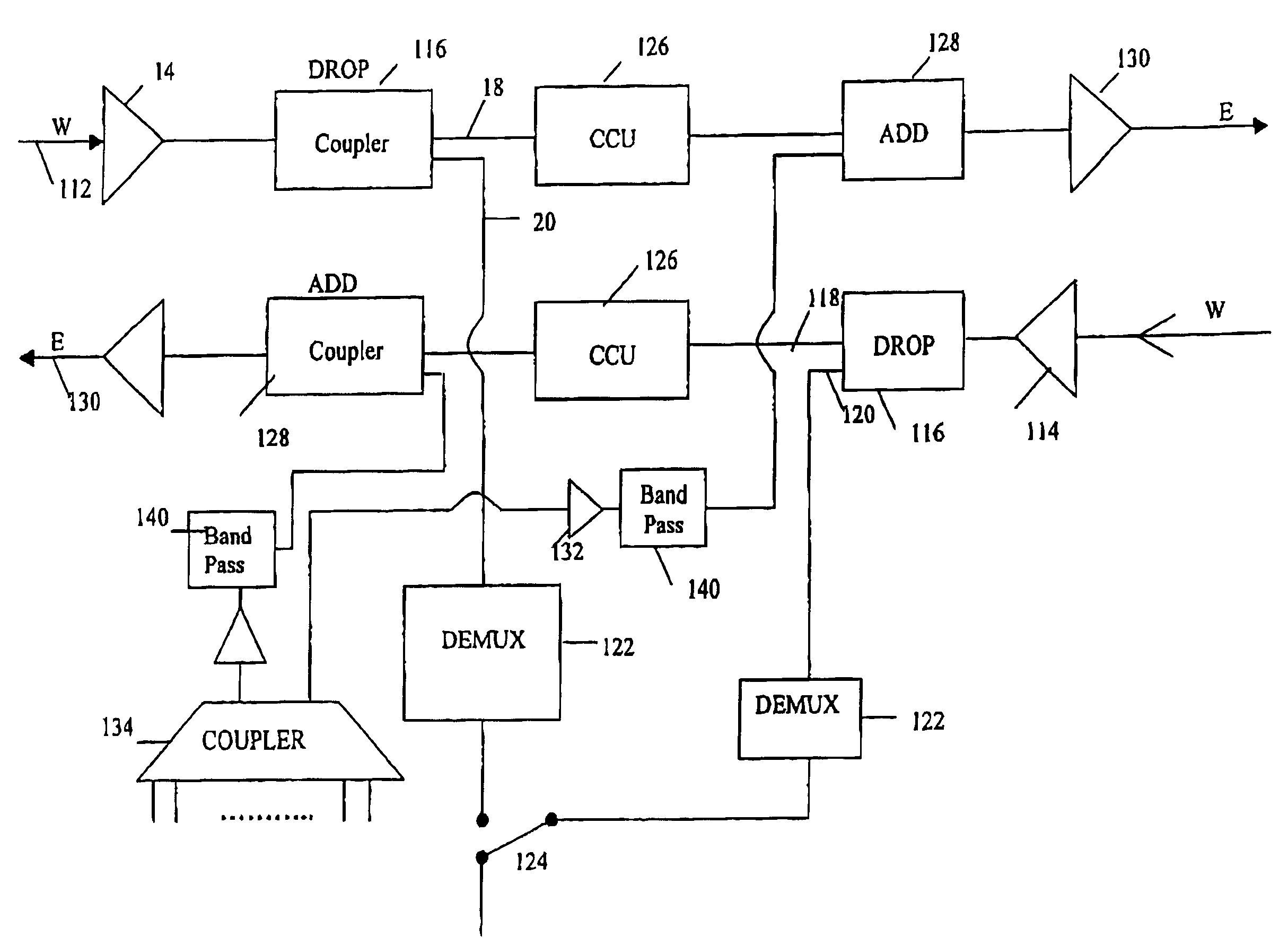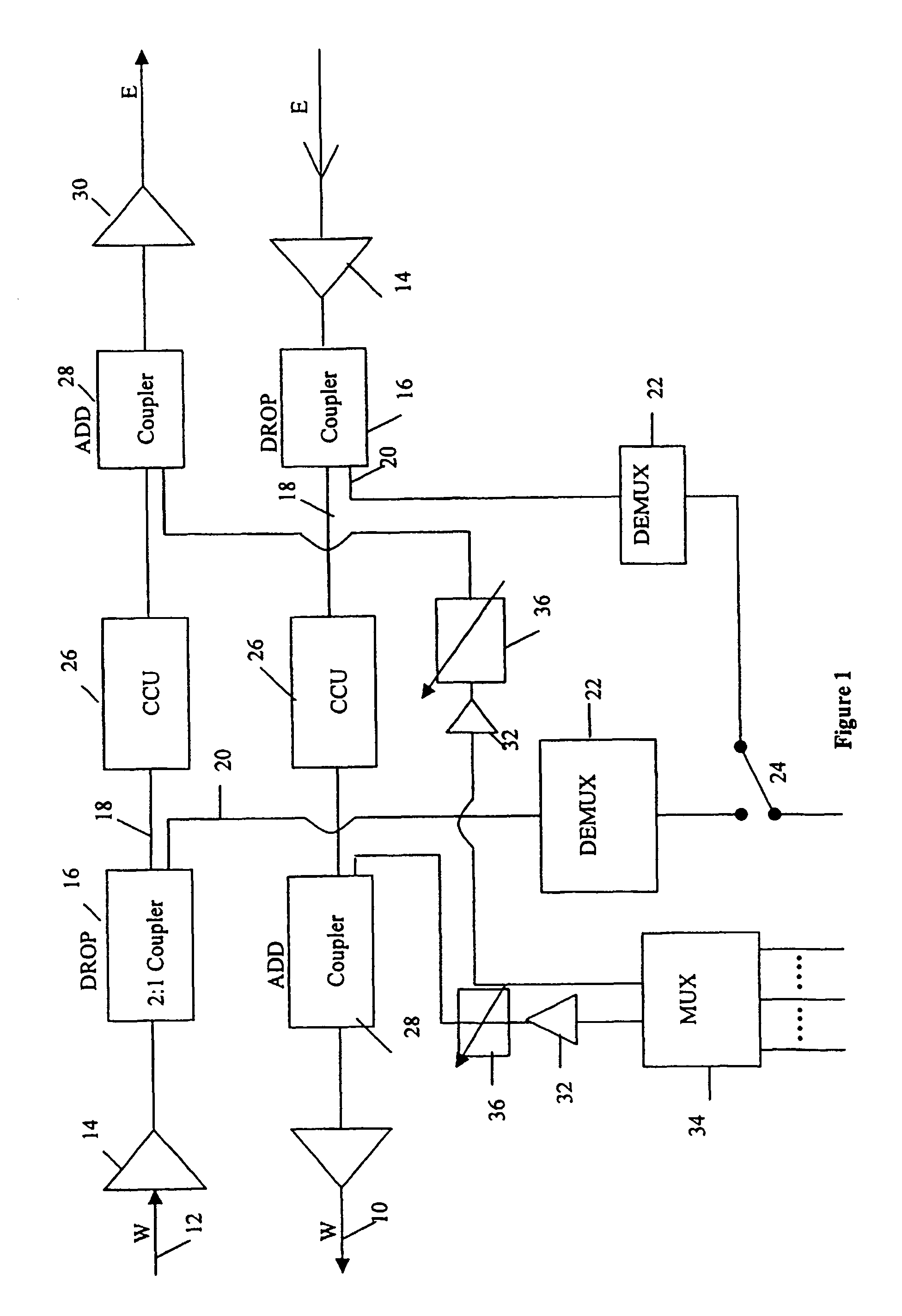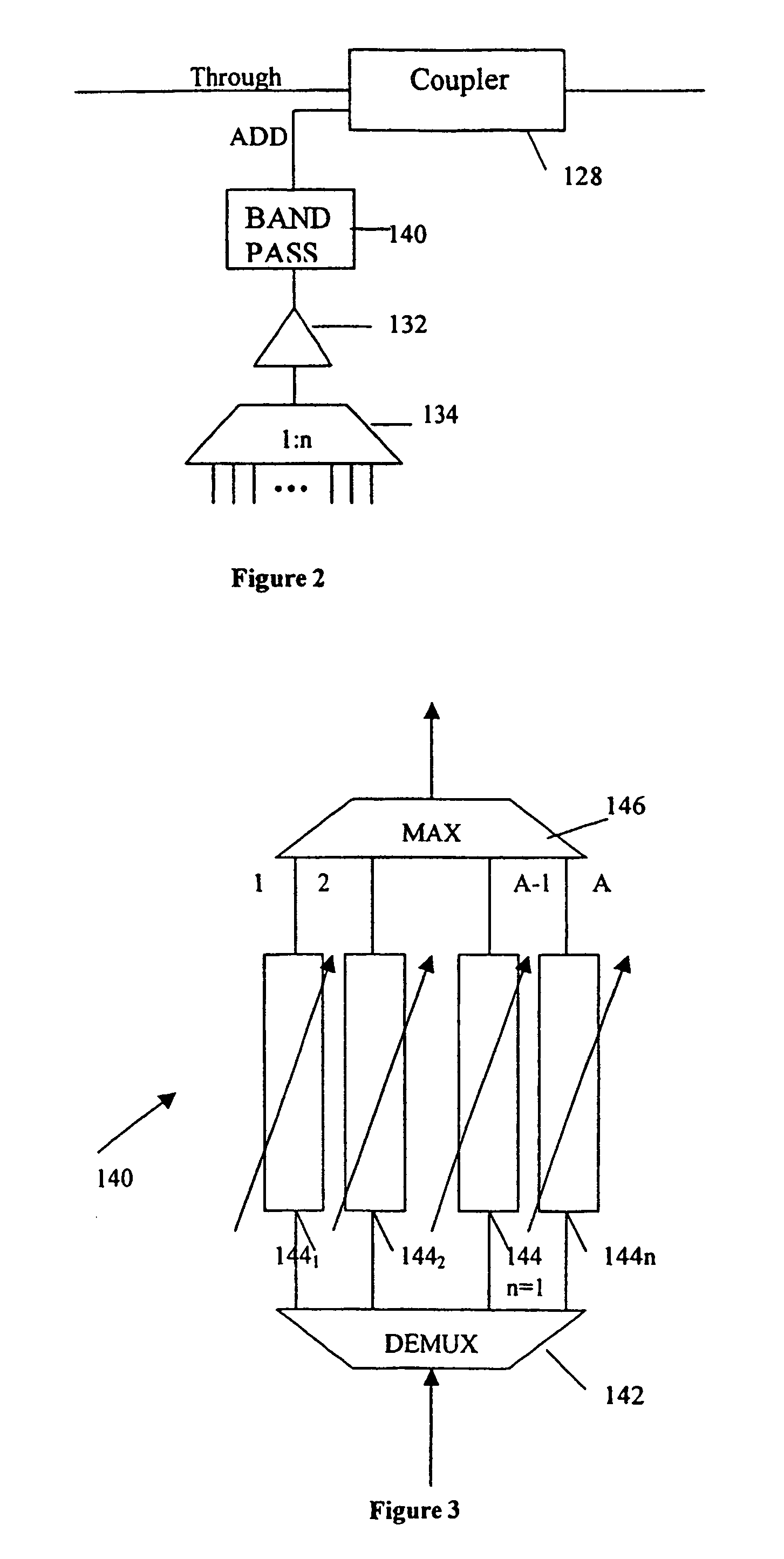Noise reduction in optical communications networks
a technology of optical communication network and noise reduction, applied in the field of noise reduction in optical communication network, can solve the problems of broadband noise which passes into the system degrading the osnr (optical signal to noise ratio) of the added signal, and affecting the osnr of the add path signal
- Summary
- Abstract
- Description
- Claims
- Application Information
AI Technical Summary
Benefits of technology
Problems solved by technology
Method used
Image
Examples
Embodiment Construction
[0024]The add path shown in FIG. 2 comprises a 32:1 combiner 134 which combines the 32 signal channels to produce a single output signal which is amplified by amplifier 132 and then passed to a WDM multiplexer / demultiplexer device 140. This device is illustrated in more detail in FIG. 3. The output of the device 140 forms the add input to add coupler 128 on one of the E / W and W / E paths of the network.
[0025]FIG. 3 shows the mux / demux device 140 in more detail. The device comprises an optical demultiplexer 142 which receives the multiple wavelength input signal and splits it into n single wavelength outputs. In this example, n=32 and is the number of channels supported by the network. Each of the 1 to n outputs of the demultiplexer 142 is passed through an individual variable optical attenuator (VOA) 144(1) . . . 144(n). The outputs of the 32 variable optical attenuators form the 1 to 32 inputs to an optical multiplexer 146 which remultiplexes the 32 signal paths to output a DWDM mult...
PUM
 Login to View More
Login to View More Abstract
Description
Claims
Application Information
 Login to View More
Login to View More - R&D
- Intellectual Property
- Life Sciences
- Materials
- Tech Scout
- Unparalleled Data Quality
- Higher Quality Content
- 60% Fewer Hallucinations
Browse by: Latest US Patents, China's latest patents, Technical Efficacy Thesaurus, Application Domain, Technology Topic, Popular Technical Reports.
© 2025 PatSnap. All rights reserved.Legal|Privacy policy|Modern Slavery Act Transparency Statement|Sitemap|About US| Contact US: help@patsnap.com



